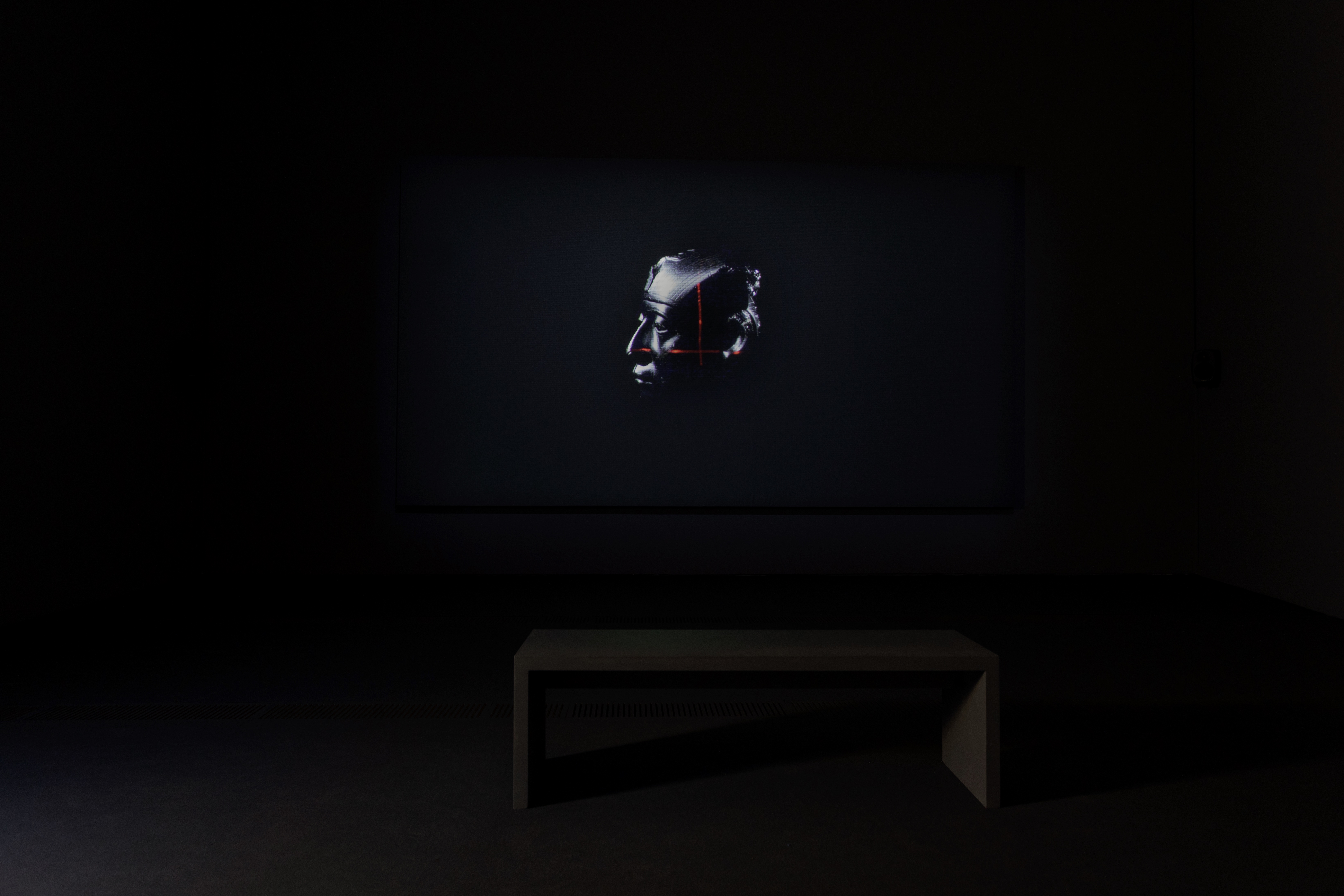



The Ultimate Romance is an installation composed by an HD video (color, sound, 4’29’’, loop) a bronze sculpture and a vitrine.
The work stems from a failed attempt to reproduce an ancient artifact, questioning the idea of circular time and the notions of failure and loss.
In the video, we see the Egyptian sculpture Head of Pharaoh Senworset III (c. 1860 BC), made of obsidian stone, part of the collection of the Calouste Gulbenkian Museum in Lisbon. Filmed in the context of its museum space, while being scanned by a laser beam—in a gesture that seeks to copy the original without ever succeeding—the piece rotates on itself, enveloped in a continuous and hypnotic movement.
From this impossibility arises the sculptural element: the image captured by the scanner is printed in 3D and later cast in bronze, assuming the form of a ruin and testimony to a process doomed to incompleteness (1). The inability of technology to record reflective surfaces, such as obsidian, becomes a metaphor here, between what is visible and what remains hidden, recalling the ancestral and divinatory properties of this volcanic rock.
The video is accompanied by a soundtrack, a faithful rendition of the song Planet Caravan (1970) by British band Black Sabbath, performed by tribute band Venïce Cathouse in collaboration with the artist (2). The ballad, with its romantic and meditative reverberations, echoes a timeless cosmic journey, with no end and no beginning.
In The Ultimate Romance, the artist brings the sculptural gesture closer to the musical gesture: both operate through repetition and difference, through trial and error. If the reinterpretation of a song allows appropriation to make anachronism a continuous present, the artifact resists, rendering obsolete the technology that seeks to prolong it into the future. The past and the present overlap in a continuous movement where the original and the copy, sound and matter, become indistinct: everything is part of the same orbit.
(1) The sculpture is displayed in a Rothstein’s vitrine, a replica of the ones existing at the Egyptian wing of the Gulbenkian Museum, evidencing and even emphasizing the idea of failure and ruin.
(2) The soundtrack was recorded on a professional sound studio through a Neve 8078 console, and the gear used was the same as that used by Black Sabbath in the 1970s. An example of this is the Leslie speaker applied in the vocal track.
The Ultimate Romance, 2023
HD video (colour, sound, 4’29’’,loop), bronze, vitrine
Variable dimensions
Installation views, 'Itinerarios XXVIII', Centro Botín, Santander, 2023
Fundación Botín Photo Archive
Photo — Vicente Paredes
Soundtrack:
Planet Caravan (1970) – Black Sabbath covered by Venïce Cathouse
Venïce Cathouse are:
Mário França: voice-guitar solo
Jonathan Bogard: bass
Hugo Cazanova: rhythm guitar / piano
Other instruments:
Henrique Pavão: percussion
Benjamim: keyboards
Mix & Master: Benjamim
Produced by Henrique Pavão & Benjamim
Recorded at Namouche Studios, Lisboa, 2023
With the support of: ArtWorks (Oporto, Portugal), The Calouste Gulbenkian Foundation and Museum (Lisboa, Portugal), Fundación Botín (Santander, Spain)
© 2025 Henrique Pavão